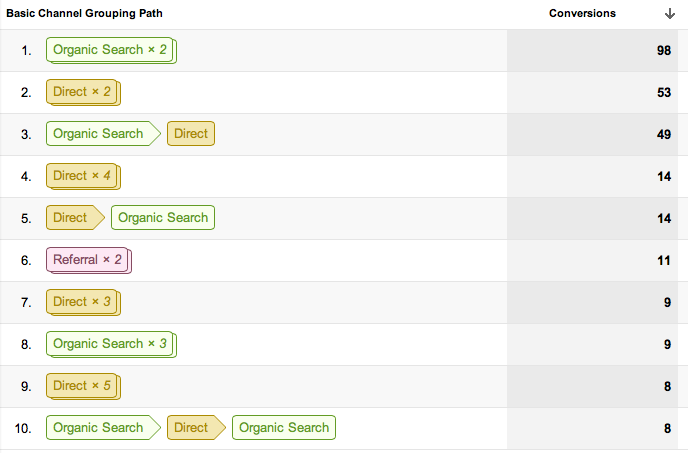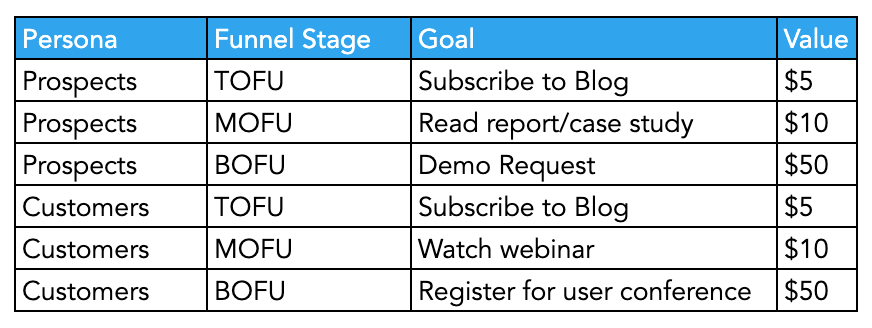Exploring What Data Is Google Analytics Goals Unable to Track
Exploring What Data Is Google Analytics Goals Unable to Track
Blog Article
Discover the Limitations of Google Analytics Goals: Introducing the Information Kind That Remain Untrackable
As businesses progressively depend on data-driven decision-making, recognizing the limitations of devices like Google Analytics ends up being critical. While Google Analytics Goals deal beneficial insights into individual communications, there exist information types that thwart tracking, posturing challenges to an extensive understanding of individual actions.
Insufficient User Journey Tracking
Incomplete individual journey tracking within Google Analytics can impede the capability to precisely assess customer habits. When the user journey is not totally tracked, there are voids in the data that stop a thorough understanding of exactly how users connect with an internet site. This lack of insight can lead to missed possibilities for optimization and improvements to the user experience.
One usual issue with incomplete individual journey monitoring is the lack of ability to see the complete course that customers take in the past finishing an objective or leaving the website. Without this info, it is challenging to identify where customers might be running into obstacles or friction points that stop them from converting. Furthermore, incomplete monitoring can obscure the effect of certain advertising efforts or website changes on user actions.
To resolve this restriction, it is important to establish appropriate tracking devices within Google Analytics to record the whole user trip. This may include establishing occasion tracking, objective funnels, or using devices like Google Tag Manager to guarantee that no essential communications go unrecorded. By getting a thorough sight of the individual journey, site proprietors can make more enlightened decisions to enhance individual involvement and drive conversions.
Acknowledgment Challenges
Navigating with attribution challenges in Google Analytics requires a comprehensive understanding of exactly how different touchpoints add to the overall conversion process. Acknowledgment challenges occur from the complexity of modern client journeys, where individuals connect with several networks prior to transforming.
One typical acknowledgment challenge is the difficulty in associating conversions to the right source, particularly in instances where customers communicate with several networks before transforming. Additionally, cross-device tracking postures another acknowledgment difficulty, as individuals often switch over in between devices throughout their trip, making it testing to track their interactions effortlessly.
Offline Conversions
Given the challenges related to associating conversions accurately in online networks, the dimension of offline conversions provides a significant possibility for marketing experts seeking a more thorough understanding of their customers' journey. Offline conversions describe activities that consumers take in the physical world, such as making purchases in brick-and-mortar stores or over the phone, attending occasions, or involving with printed materials - what data is google analytics goals unable to track. These conversions are critical for businesses that operate both online and offline, as they offer useful understandings into the performance of advertising and marketing projects throughout various touchpoints
Tracking offline conversions generally presented a considerable difficulty for marketing experts, as it was testing to attach these actions back to specific on the internet communications properly. Nevertheless, with innovations in modern technology, such as the combination of CRM systems, special identifiers, and voucher codes, services can now link the void between online and offline data to gain a more holistic sight of consumer habits. By efficiently gauging offline conversions, marketing professionals can maximize their strategies, assign resources more effectively, and inevitably improve the total client experience.
Cross-Device Tracking
Cross-device monitoring plays an important function in comprehending the interconnected nature of consumers' digital interactions across multiple devices. In today's omnichannel globe, where individuals perfectly switch over between desktop computers, tablet computers, and mobile phones, tracking their actions throughout these tools is vital for marketing experts to get a comprehensive view of their customer trip.

In addition, privacy worries and policies such as GDPR and CCPA have even more challenging cross-device monitoring. With customers requiring even more control over their information and increased restrictions on monitoring innovations, marketers need to discover privacy-compliant and cutting-edge methods to connect customer interactions throughout gadgets.
Dynamic Content Involvement
Recognizing individual interaction with vibrant web content is crucial in optimizing electronic advertising methods for boosted target market interaction. Dynamic content describes website aspects that alter based on customer habits, choices, or various other variables, offering a tailored experience. Nevertheless, weblink tracking individual communications with dynamic web content presents obstacles for typical analytics tools like Google Analytics.
While Google Analytics can track basic communications like clicks and page views, it may have a hard time to capture even more nuanced engagements within dynamic web content. what data is google analytics goals unable to track. Metrics such as time invested on specific vibrant aspects, hover activities, or interactions within pop-ups are typically not easily quantifiable making use of common monitoring methods. This limitation hinders marketers' capability to fully grasp exactly how individuals are engaging with vibrant web content and customize their methods as necessary

Verdict
To conclude, Google Analytics goals have restrictions in tracking insufficient customer trips, connecting conversions properly, catching offline conversions, tracking cross-device communications, and measuring dynamic material involvement. These restraints highlight the relevance of discovering additional monitoring techniques and tools to her comment is here acquire an extra detailed understanding of individual behavior and conversions past what Google Analytics can offer.
While Google Analytics Goals offer beneficial insights into user communications, there exist data kinds that elude tracking, presenting challenges to a comprehensive understanding of customer habits.Incomplete user journey tracking within Google Analytics can prevent the capacity to properly assess customer habits. When the individual journey is not fully tracked, there are spaces in the data that avoid a comprehensive understanding of just how users connect with an internet site.One common issue with insufficient customer journey tracking is the failure to see the full path that individuals take before completing a goal or leaving the site. By obtaining a comprehensive view of the user trip, internet site owners can make even more educated decisions to boost user interaction and drive conversions.
Report this page